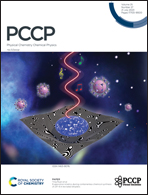Recent advances in enhancing stereocomplexation between poly(lactide) enantiomeric chains
Abstract
Over the past three decades, its excellent biodegradability and biocompatibility have enabled poly(lactide) (PLA) to be extensively explored as a replacement for oil-based thermoplastics in biomedical and industrial applications. However, PLA homopolymers have “facilitative” limitations such as low mechanical properties, low processing temperatures, slow recrystallization, and insufficient crystallinity, which have usually hindered commercial PLA in industrial and biomedical applications. The formation of stereo-complexation between enantiomeric poly(L-lactide) (PLLA) and poly(D-lactide) (PDLA) chains offers an effective approach to PLA-based engineering materials with improved properties. In this review, we have understandably summarized recent progress in improving the SC crystallization of PLA-based plastics into two aspects, i.e., enantiomeric PLA homopolymers, and enantiomeric PLA-based copolymers. One important point to be noted is that much emphasis is focused on improving SC crystallization by enhancing interactions in the enantiomeric PLA-based copolymers. There is an insightful discussion about the effect of enhanced SC crystallization as well as intermolecular interactions between PLLA and PDLA chains in various stereocomplexable systems. Most importantly, this review starts with the basic understanding of SC crystallization and further elaborates on the rational mechanism of enhanced SC crystallization to provide a broad idea for broadening the road toward PLA-based materials.

- This article is part of the themed collection: 2023 PCCP Reviews


 Please wait while we load your content...
Please wait while we load your content...